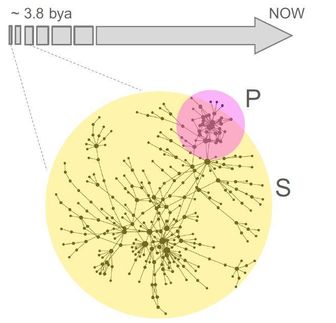Cell of origin identified for common type of breast cancer
A study by researchers at Tufts University School of medicine, the Sackler School of Graduate Biomedical Sciences at Tufts, and Tufts Medical Center improves our current understanding of the origins of breast cancer. The researchers propose a new model for breast cell differentiation that identifies two populations of progenitor cells, one of which appears to be the cell of origin for luminal-like breast cancer, the most common form of the disease. The study, published in Cancer Cell , identifies a possible target for breast cancer drugs.
Breast cancers are generally classified in one of two categories. Luminal-like cancers, which are sensitive to hormones, are the most common form of breast cancer and tend to grow more slowly. Basal-like cancers, which are not sensitive to hormones, are more aggressive and tend to have a poorer prognosis. While scientists have predicted that these cancers might arise from different types of progenitor cells, it has been difficult to identify these cells of origin.
A team of researchers led by Charlotte Kuperwasser and Philip Hinds identified different types of breast stem and progenitor cells using a novel mouse model. Previously, researchers had been unable to functionally distinguish between stem cells that make the entire mammary tissue and other progenitor cells due to the shared molecular features of these cell populations.
"It wasn't clear that breast tissues did in fact contain functionally distinct progenitor cells. Our findings, however, show that luminal-like breast cancer originates from one type of progenitor cell, lobule progenitors, which are the self-renewing cells required to generate the milk-producing structures in breast tissue during pregnancy and lactation. Inhibiting a protein essential to these cells prevented the formation of breast tumors in mice," said co-senior author Charlotte Kuperwasser, PhD, associate professor in the anatomy and cellular biology department at Tufts University School of Medicine (TUSM) and member of the cell, molecular, and developmental biology and genetics program faculties at Sackler.
The researchers discovered that this population of progenitor cells depends on the activity of a protein called cyclin D1 for self-renewal and differentiation. The team generated a mouse model with inactive cyclin D1 and the gene known to promote luminal-like breast cancer. Compared to controls, the mice lacking in cyclin D1 activity contained very few lobule progenitor cells and had an absence of luminal-like tumors.
"The effects of eliminating cyclin D1 activity were profound. Depriving the lobule progenitor cells of cyclin D1 prevented self-renewal, disrupted normal mammary differentiation, and blocked the formation of luminal-like tumors," said co-senior author Philip Hinds, PhD, deputy director of the Tufts Medical Center Cancer Center. He is also a professor in the radiation oncology department at TUSM and member of the biochemistry and genetics program faculties at Sackler.
"Now that we have seen that this approach prevents mammary tumor formation, we would like to see if inhibition of cyclin D1 slows or reverses the growth of existing tumors. We predict that targeting cyclin D1 would diminish the progenitor cells that drive luminal-like tumor growth," continued Hinds.
"If we find that inhibition of cyclin D1 activity combats existing tumors, the protein may serve as a new target for breast cancer drugs," said Kuperwasser.
Original publication: Jeselsohn R, Brown NE, Arendt L, Klebba I, Hu MG, Kuperwasser C, Hinds PW.; "Cyclin D1 Kinase Activity Is Required for the Self-Renewal of Mammary Stem and Progenitor Cells that Are Targets of MMTV-ErbB2 Tumorigenesis."; Cancer Cell . 2010; 17: 65-76.




















































